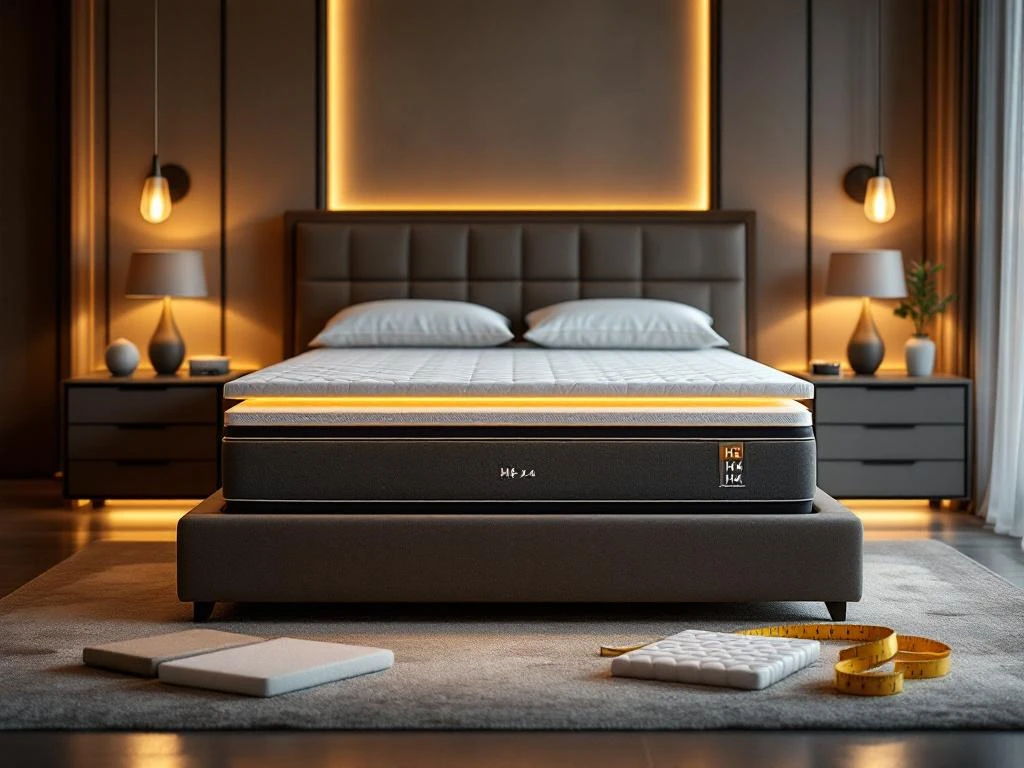Your shopping cart is empty.
Browse our collection or make an appointment.

You choose the right bed base by matching your sleeping position, comfort preferences and body type with the properties of different base types. Side sleepers benefit from flexible slatted bases, back sleepers from firmly supported box springs, and stomach sleepers from fixed bases. Also pay attention to the combination with your mattress for optimal comfort.
Your bed base is literally the foundation of your sleeping comfort. It is not just a foundation for your mattress, but an active partner that contributes to a good night's sleep. A good bed base extends the life of your mattress and provides the right support for your body.
The bed base affects how your mattress responds to your body. If the base is too soft, your mattress sags, causing your back to curve. A base that is too hard, on the other hand, can cause pressure points. The right bed base ensures that your mattress can do its job optimally.
Ventilation also plays an important role. A well ventilated bed base prevents moisture build-up and helps with temperature regulation during your sleep. This is especially important if you sweat easily or sleep in a hot bedroom.
There are four main types of bed bases, each with unique features that support different sleeping styles.
Slatted bed bases consist of wooden or plastic slats that offer flexibility. They ventilate very well and you can often adjust the firmness by zone. This makes them suitable for different body types and sleeping positions.
A box spring combines a sprung underbox with a mattress. This system offers a luxurious bed feel and excellent support. Box springs are popular because they combine comfort and elegance.
Fixed bases are rigid bases with no flexibility. They offer firm support but less adaptability to your body shape. They are often cheaper but can be less comfortable.
Electric bases can be adjusted for different positions. They are ideal if you like to read upright or suffer from reflux. Modern versions have different zones that are independently adjustable.
Your sleeping position largely determines which bed base is best for you. Each posture has specific support needs.
Side sleepers benefit from flexible slatted bases that yield at shoulders and hips. These zones need more room to sink in, while your waist needs support. A slatted base with adjustable zones works perfectly here.
Back sleepers benefit from firm, even support. A box spring or firm slatted base keeps your spine in its natural S-shape. Too much flexibility can lead to a hollow back.
Belly sleepers need the firmest support to prevent their waists from sinking too deeply. A firm base or very firm slatted base prevents back pain in this sleeping position.
The difference between a slatted bed and box spring is in the construction and comfort they provide. Both have their own advantages.
A slatted base consists of individual slats that offer flexibility. You can often adjust firmness by zone, which is ideal for couples with different needs. Slatted bases provide excellent ventilation and are usually more affordable. They work well with different mattress types.
A box spring is a complete system with a sprung underbox and matching mattress. This creates a luxurious bed feel with excellent support. Box springs are higher, making boarding easier. They often offer more durability but are more expensive to purchase.
| Feature | Slatted base | Boxspring |
|---|---|---|
| Flexibility | High, adjustable by zone | Moderate, depending on suspension |
| Ventilation | Excellent | Good |
| Price | More affordable | More expensive |
| Lifetime | Long at good quality | Very long |
There are clear signs that your bed base is in need of replacement. Pay attention to these warning signs for optimal sleep comfort.
Reduced comfort is often the first sign. If you wake up stiff or sore in the morning when you didn't before, your bed base may be the cause. Also, if your partner and you feel each other moving around more, this indicates decreased support.
Visible wear is a clear signal. With slatted bases, you can look for broken or sagging slats. With box springs, watch for sagging spots or springs that can be felt through the upholstery.
Noises while moving can indicate worn parts. Creaking slats or squeaking springs disturb your sleep and that of your partner.
As a general rule, you replace a bed base after 8-12 years, depending on quality and use. A custom or top quality luxury bed often lasts longer than standard designs.
When in doubt about your current bed base, professional advice is valuable. Sleep specialists can assess whether replacement is necessary and which type best suits your new sleeping needs. An investment in a quality bed base directly improves your sleep quality and therefore your daily well-being.